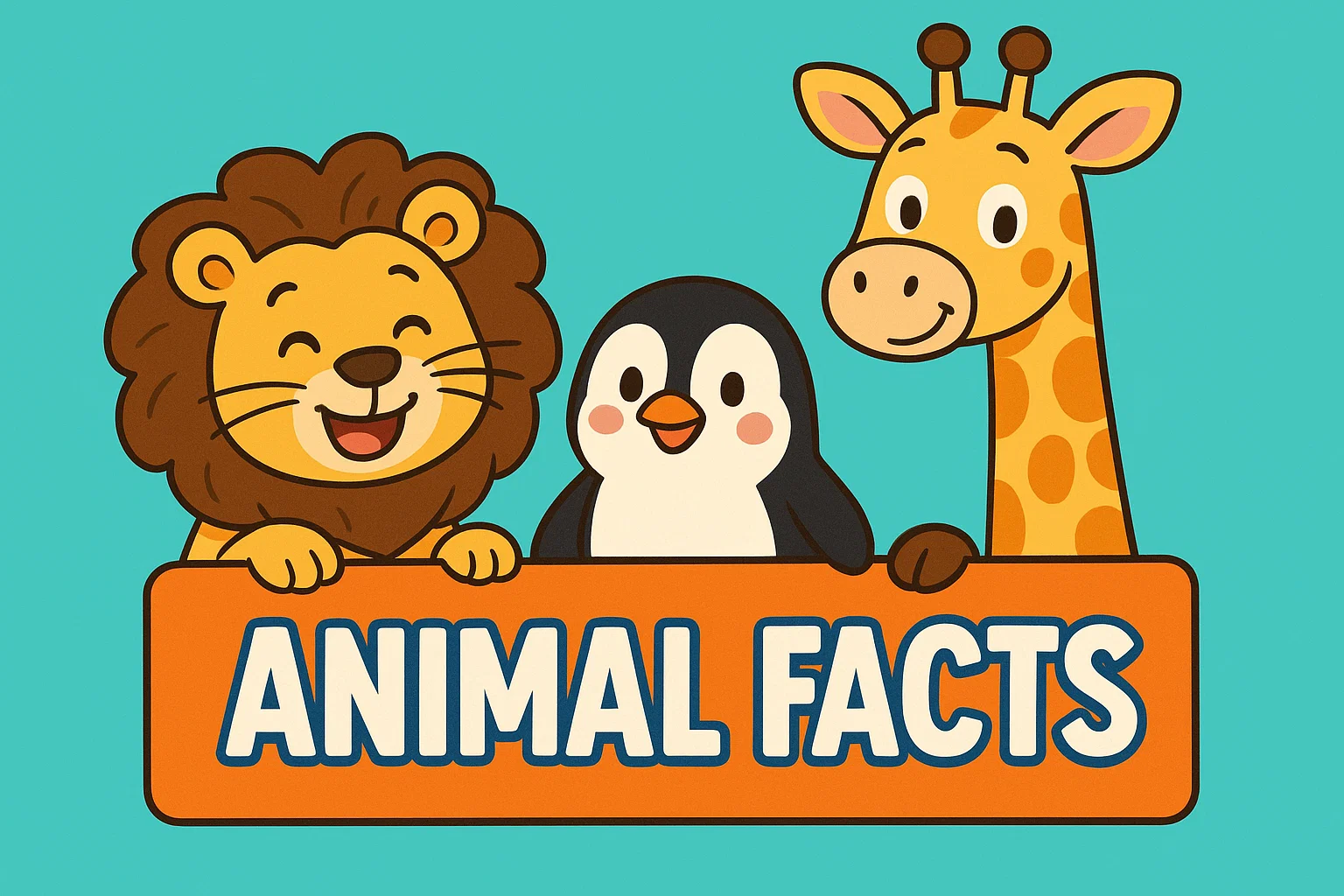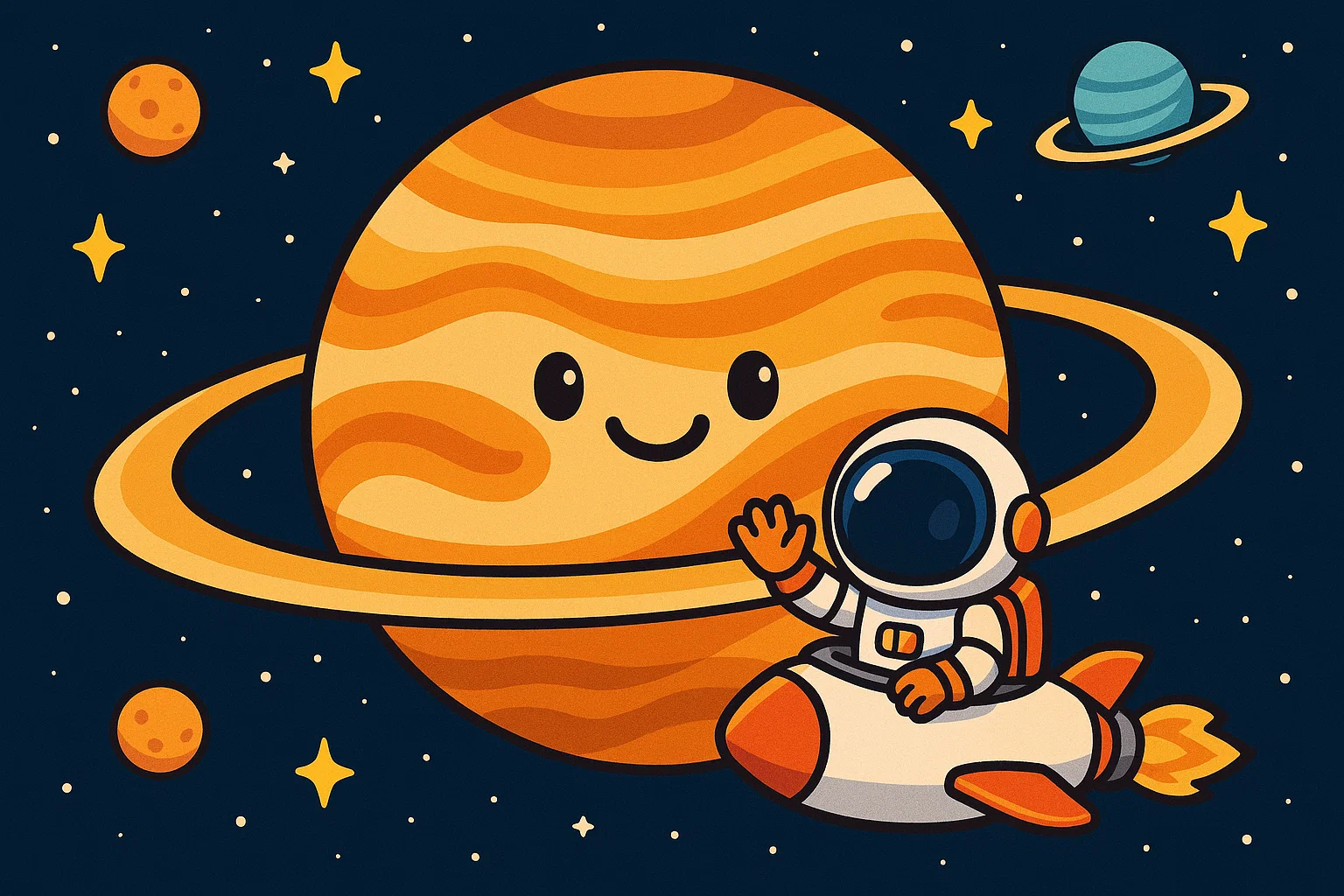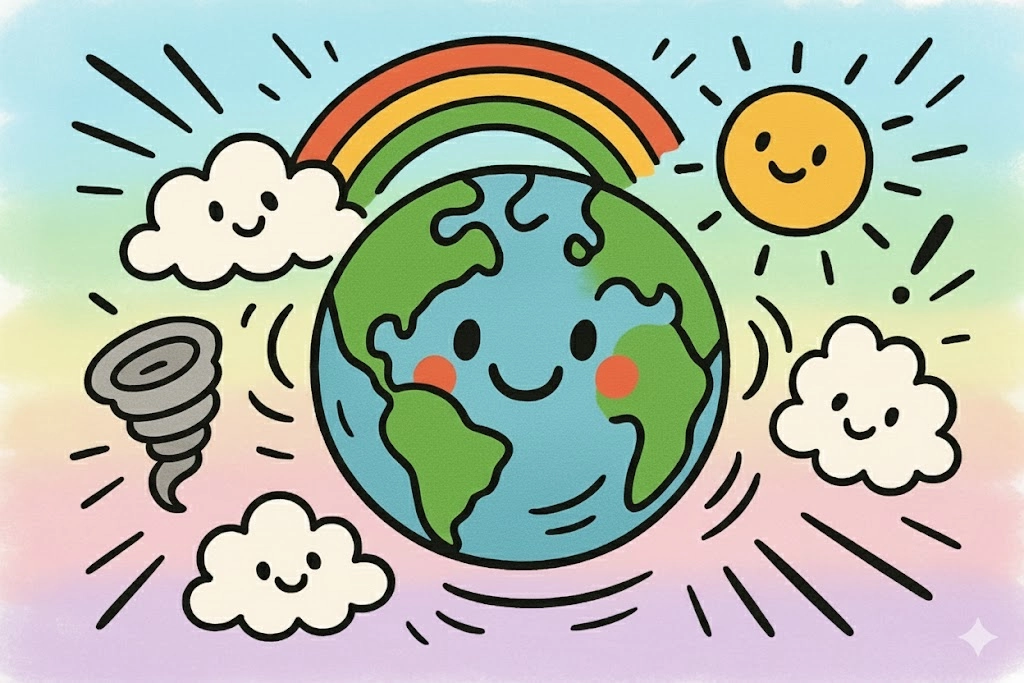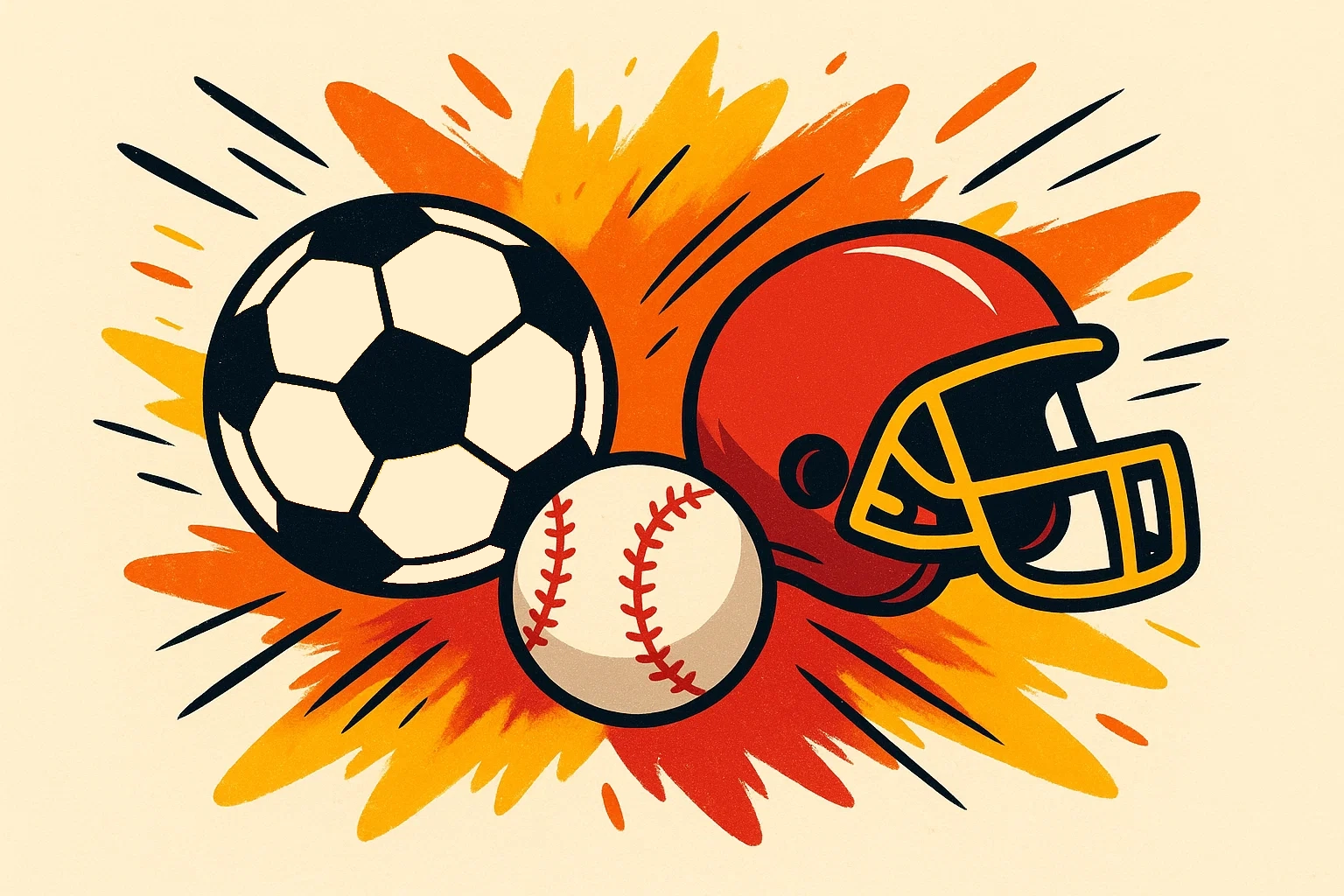Random Fun Facts For Kids

Children possess an incredible curiosity about the world around them. When you watch your kids explore, you’ll notice how their eyes light up at discovering something new. Sharing interesting facts with young learners not only satisfies their natural inquisitiveness but also builds their knowledge foundation across multiple subjects.
This comprehensive collection brings together amazing facts spanning science, nature, history, and beyond. Whether you’re a parent looking to spark dinner table conversations or an educator seeking engaging content, these carefully curated facts will captivate young minds.
Amazing Random Facts

The world contains countless surprises waiting to be discovered. These random fun facts span various topics and will leave kids wanting to learn more about everything around them.
Daily Random Fact Collection
Here’s a fascinating daily random fact:
- Honey never spoils. Archaeologists have found 3,000-year-old honey in Egyptian tombs that was still perfectly edible. This occurs because honey has a low moisture content and high acidity, creating an environment where bacteria and microorganisms cannot survive.
- Bananas are berries, but strawberries aren’t. In botanical terms, a berry must develop from a flower with one ovary. Bananas qualify, while strawberries come from flowers with multiple ovaries. This classification surprises most people who assume the opposite based on appearance alone.
- The Eiffel Tower grows taller in summer. Due to thermal expansion, the iron structure can increase by up to 6 inches during hot weather. When metal heats up, its particles move more and take up more space, causing the tower to expand temporarily.
- Wombats produce cube-shaped droppings. Australian researchers discovered that wombats have uniquely elastic intestines that form their waste into cubes. Scientists believe this shape prevents the droppings from rolling away, allowing wombats to mark their territory more effectively.
Truly Weird Facts Students Need
- Octopuses have three hearts. Two hearts pump blood to the gills, while the third pumps blood to the rest of the body. When an octopus swims, the heart delivering blood to the body stops beating, which explains why these creatures prefer crawling to swimming—it’s less exhausting.
- Your nose can remember 50,000 different scents. The human olfactory system connects directly to the brain’s memory centers, which explains why certain smells can trigger vivid memories from years ago. This connection makes smell one of the most powerful memory triggers we possess.
- A group of flamingos is called a “flamboyance.” These pink birds get their color from the carotenoid pigments in the algae and crustaceans they eat. Baby flamingos are born gray or white and gradually turn pink as they mature and consume their natural diet.
- Sea otters hold hands while sleeping. They do this to prevent drifting apart in ocean currents. Otters also wrap themselves in kelp forests as anchors, creating adorable “rafts” of sleeping otters floating together.
Unexpectedly Cool Facts
- Lightning strikes Earth about 100 times every second. That’s approximately 8.6 million times per day. The temperature of a lightning bolt can reach 30,000 Kelvin (53,540 degrees Fahrenheit), which is five times hotter than the surface of the sun.
- There are more stars in the universe than grains of sand on Earth’s beaches. Astronomers estimate around 1024 stars exist in the observable universe, while Earth’s beaches contain approximately 7.5×1018 grains of sand. This comparison helps illustrate the vast scale of our cosmos.
- A day on Venus is longer than its year. Venus takes 243 Earth days to rotate once on its axis but only 225 Earth days to orbit the sun. Additionally, Venus rotates backward compared to most planets in our solar system.
Top Animal Facts

Animals display remarkable abilities and characteristics that often surpass human capabilities. These animal facts reveal the extraordinary diversity of life on our planet.
Fascinating Animal Facts
- Reindeer eyes change color with the seasons. In summer, reindeer eyes are golden, but in winter, they turn blue. This adaptation helps them see better in the extreme light conditions of Arctic environments, where winter brings months of darkness and summer brings constant daylight.
- Emperor penguins can dive deeper than any other bird. They’ve been recorded reaching depths of 1,850 feet and can hold their breath for over 20 minutes. Their bodies contain special adaptations, including solid bones and the ability to reduce their heart rate to conserve oxygen.
- Hummingbirds are the only birds that can fly backward. Their unique wing structure allows them to rotate their wings in a figure-eight pattern, giving them incredible maneuverability. They can also hover in place and fly upside down briefly.
- Dolphins have names for each other. Research suggests that dolphins develop signature whistles that function like names, allowing them to call out to specific individuals. When dolphins hear their “name,” they respond, demonstrating a level of social complexity similar to humans.
Secrets of the Dolphin
- Dolphins sleep with one eye open. More accurately, they rest one half of their brain at a time while the other half remains alert. This adaptation, called unihemispheric slow-wave sleep, allows them to continue breathing consciously and watch for predators while resting.
- A dolphin can hear sounds underwater from up to 15 miles away. Their echolocation abilities are so precise they can determine the size, shape, and speed of objects from the returning sound waves. This biological sonar surpasses human-made sonar technology in many ways.
- Dolphins have been observed using tools. In Shark Bay, Australia, some dolphins place marine sponges on their snouts to protect themselves while foraging on the rough ocean floor. This behavior is passed down from mothers to daughters, representing a form of cultural transmission.
| Dolphin Species | Top Speed (mph) | Dive Depth (feet) | Social Group Size |
| Bottlenose Dolphin | 22 | 600 | 10-30 |
| Orca (Killer Whale) | 34 | 300 | 5-30 |
| Spinner Dolphin | 20 | 900 | 100-1000 |
| Common Dolphin | 25 | 920 | 10-500 |
Экспортировать в Таблицы
Amazing Truths about Polar Bears
- Polar bears aren’t actually white. Their fur is transparent and appears white because it reflects visible light. Each hair is a hollow tube that reflects light, similar to how snow appears white. Underneath all that fur, polar bear skin is black, which helps them absorb heat from the sun.
- Polar bears can smell seals from 20 miles away. Their sense of smell is so acute they can detect seal breathing holes in the ice from great distances. This ability is crucial for their survival in the Arctic, where food can be scarce and spread across vast territories.
- A polar bear’s liver contains dangerous levels of vitamin A. Indigenous Arctic peoples have known for generations not to eat polar bear liver, which contains toxic concentrations of vitamin A—enough to make humans seriously ill. This concentration comes from the seals and fish that make up the polar bear’s diet.
- Polar bears can swim for days without rest. They’ve been tracked swimming for over 400 miles continuously, using their large front paws as paddles and their back legs as rudders. However, climate change is forcing them to swim longer distances as sea ice diminishes, which poses survival challenges, particularly for younger polar bears.
Everything About the Octopus
- An octopus can squeeze through any opening larger than its beak. Since they have no bones except for a hard beak used for eating, these remarkable creatures can compress their bodies to fit through incredibly small spaces. This ability helps them escape predators and find shelter in tight crevices.
- Octopuses are masters of camouflage. They can change color and texture in less than a second, matching their surroundings with remarkable precision. Special skin cells called chromatophores, iridophores, and leucophores work together to create these instant transformations.
- Most octopuses live for only one to two years. After mating, males die within months, and females stop eating after laying eggs, focusing entirely on protecting them until they hatch. The mother dies shortly after the eggs hatch, having completed her biological purpose.
- An octopus has nine brains—one central brain and eight smaller brains in each arm. Each arm can act independently, tasting and touching objects without input from the central brain. This distributed intelligence allows octopuses to perform multiple tasks simultaneously.
Human Body Facts
The human body performs countless remarkable functions every moment. Understanding these processes helps children appreciate the complexity of being alive.
Mind-Blowing Human Body Facts
- Your body contains about 37.2 trillion cells. These cells work together in an incredibly coordinated way to keep you alive. To put this in perspective, if you counted one cell per second, it would take you over 1 million years to count them all.
- You produce about 25,000 quarts of saliva in your lifetime. That’s enough to fill two swimming pools. Saliva plays crucial roles beyond just keeping your mouth moist—it begins the digestive process, protects your teeth, and helps you taste food.
- Your bones are stronger than steel. Pound for pound, bone is about five times stronger than steel. The femur (thigh bone) can support approximately 30 times your body weight, making it the strongest bone in your body.
- You shed about 30,000 to 40,000 dead skin cells every minute. Over the course of your lifetime, you’ll shed approximately 40 pounds of skin. This constant renewal process replaces your entire outer layer of skin every 28 to 30 days.
Fun Facts About Left-Handedness
- About 10% of the world’s population is left-handed. This percentage has remained relatively stable throughout human history, suggesting evolutionary advantages to maintaining both left and right-handed individuals in populations.
- Left-handed people may have advantages in certain sports. In competitive sports like baseball, tennis, and boxing, left-handed athletes can have a strategic edge because their opponents have less experience competing against them. Studies indicate left-handed athletes are overrepresented in interactive sports.
- Twins are more likely to be left-handed. Research shows that twins have roughly twice the rate of left-handedness compared to single births. Scientists believe this may relate to developmental processes in the womb or genetic factors that influence both twinning and handedness.
- Left-handedness runs in families but isn’t strictly genetic. If both parents are left-handed, there’s about a 26% chance their child will be left-handed. If both parents are right-handed, the chance drops to about 9%, suggesting complex interactions between genetics and environmental factors.
Facts About the Heart and Brain
- Your heart beats about 100,000 times per day. Over an average lifetime, that’s approximately 3 billion heartbeats, pumping around 1.5 million barrels of blood. This tireless organ begins beating about three weeks after conception and continues until the moment we die.
- The human brain contains approximately 86 billion neurons. These nerve cells form trillions of connections called synapses, creating the most complex structure known in the universe. Your brain generates enough electricity to power a small light bulb.
- Information travels through your nervous system at speeds up to 268 miles per hour. This incredibly fast transmission allows you to react to stimuli almost instantaneously. However, pain signals travel more slowly, which explains why you might see an injury before you feel it.
- Your brain uses 20% of your body’s total oxygen and energy. Despite representing only about 2% of your body weight, the brain requires a disproportionate amount of resources to function. This high energy demand explains why good nutrition and adequate sleep are so important for cognitive performance.
Space and Solar System Facts

The cosmos contains wonders that challenge our imagination. These space facts help kids understanding our place in the vast universe.
Exploring the Solar System
- The solar system formed approximately 4.6 billion years ago. It began as a giant cloud of gas and dust that collapsed under its own gravity, with the sun forming at the center and planets coalescing from the remaining material. This process took millions of years to complete.
- One million Earths could fit inside the sun. The sun contains 99.86% of the solar system’s total mass, making it by far the most massive object in our cosmic neighborhood. Its gravitational pull keeps all the planets in their orbits.
- Neptune takes 165 Earth years to complete one orbit around the sun. This means that since its discovery in 1846, Neptune has completed only one full orbit. If you were born on Neptune, you’d wait more than a human lifetime to celebrate your first birthday.
- The Great Red Spot on Jupiter is a storm that has raged for at least 400 years. This massive anticyclonic storm is larger than Earth and shows no signs of stopping. Wind speeds inside the storm can reach 432 kilometers per hour.
Fantastic Fun Facts About Space
- Space is completely silent. Sound waves need a medium like air or water to travel through, and space is a vacuum with no atmosphere. Astronauts communicate using radio waves, which can travel through the vacuum of space.
- The footprints on the moon will last for millions of years. With no wind or water erosion on the lunar surface, the footprints left by Apollo astronauts could remain visible for 10 to 100 million years, barring any meteorite impacts in those exact locations.
- A spacesuit costs approximately $12 million to build. The suits worn by NASA astronauts are essentially miniature spacecraft, providing oxygen, temperature regulation, radiation protection, and pressure control. Each suit is custom-fitted and takes months to produce.
- Neutron stars can spin 600 times per second. These incredibly dense stellar remnants pack more mass than our sun into a sphere only about 12 miles in diameter. A teaspoon of neutron star material would weigh about 6 billion tons on Earth.
Discovering Jupiter
- Jupiter is the largest planet in our solar system. It has a mass 2.5 times greater than all the other planets combined. If Jupiter were hollow, more than 1,300 Earths could fit inside it.
- Jupiter has at least 95 confirmed moons. Four of these—Io, Europa, Ganymede, and Callisto—are called the Galilean moons because Galileo Galilei discovered them in 1610. Ganymede is the largest moon in the solar system, even larger than the planet Mercury.
- One day on Jupiter lasts only about 10 hours. Despite being the largest planet, Jupiter rotates faster than any other planet in our solar system. This rapid rotation creates powerful atmospheric bands and contributes to Jupiter’s extreme weather systems.
- Jupiter’s magnetic field is 20,000 times stronger than Earth’s. This powerful magnetosphere extends millions of miles into space and would appear larger than the sun if we could see it from Earth. The intense radiation within Jupiter’s magnetic field poses challenges for spacecraft exploring the planet.
Earth and Weather Facts

Our planet exhibits fascinating phenomena that kids love to learn about. These facts explain the forces that shape our world.
Facts About the Weather
- Lightning can reach temperatures of 50,000 degrees Fahrenheit. This is approximately five times hotter than the surface of the sun. The intense heat causes the surrounding air to expand rapidly, creating the thunder we hear.
- Mount Everest grows about 4 millimeters per year. The ongoing collision between the Indian and Eurasian tectonic plates continues to push the Himalayan mountains upward. At 29,032 feet, Mount Everest remains the tallest mountain on Earth as measured from sea level.
- Antarctica is the driest place on Earth. Some areas of Antarctica, called dry valleys, haven’t seen rain for nearly 2 million years. The continent receives less than 2 inches of precipitation annually in its interior, making it technically a desert despite being covered in ice.
- The wettest place on Earth is Mawsynram, India. This town receives an average of 467 inches of rain per year. The extreme rainfall occurs during the monsoon season, when moist air from the Bay of Bengal is funneled up steep terrain, causing massive precipitation.
Weird But True Earth Fun Facts
- Lake Baikal in Siberia is the world’s deepest freshwater lake. At 5,387 feet deep, it holds 20% of the world’s unfrozen freshwater—more than all the Great Lakes combined. The lake is also ancient, having formed 25 million years ago, making it the oldest existing freshwater lake.
- Earth’s rotation is gradually slowing down. Each century, our planet’s rotation slows by about 2 milliseconds. This occurs because of gravitational interactions with the moon. Approximately 1.4 billion years ago, an Earth day was only about 18 hours long.
- The Pacific Ocean contains a “garbage patch” twice the size of Texas. This floating collection of plastic debris, officially called the Great Pacific Garbage Patch, results from ocean currents concentrating human waste. It highlights the importance of reducing plastic pollution and protecting our oceans.
- Earth has experienced five major mass extinction events. The most famous occurred 66 million years ago when an asteroid impact contributed to the extinction of non-avian dinosaurs. These events remind us that Earth’s environment has changed dramatically throughout geological history.
Tornadoes and Hurricanes
- Tornadoes can have wind speeds exceeding 300 miles per hour. The most powerful tornadoes, rated EF5 on the Enhanced Fujita scale, can level well-built houses and throw vehicles hundreds of yards. These extreme storms form when warm, moist air meets cool, dry air in conditions with strong wind shear.
- The largest hurricanes can be 1,000 miles in diameter. Hurricane Sandy in 2012 had a diameter of approximately 1,100 miles when it made landfall. These massive storms form over warm ocean water and can release energy equivalent to exploding a 10-megaton nuclear bomb every 20 minutes.
- Tornado Alley experiences about 1,000 tornadoes per year. This region, stretching from Texas through Oklahoma, Kansas, Nebraska, and into South Dakota, provides ideal conditions for tornado formation. The flat terrain allows different air masses to collide easily, creating the instability needed for these violent storms.
- Hurricanes spin counterclockwise in the Northern Hemisphere and clockwise in the Southern Hemisphere. This rotation, caused by the Coriolis effect, results from Earth’s rotation. Hurricanes cannot form within about 300 miles of the equator because the Coriolis effect is too weak there.
History and Geography Facts
Understanding the past helps children make sense of the present. These historical and geographical facts provide windows into different times and places.
Historical Random Fun Facts
- Abraham Lincoln is enshrined in the Wrestling Hall of Fame. Before becoming president, Lincoln was an accomplished wrestler with a record of approximately 300 wins and only one loss. His height, reach, and strength made him a formidable opponent in frontier wrestling matches.
- The shortest war in history lasted 38 minutes. In 1896, conflict between Britain and Zanzibar ended almost as soon as it began. British forces issued an ultimatum, and when it expired, they quickly defeated Zanzibar’s defensive forces, resulting in the Anglo-Zanzibar War.
- Ancient Egyptians used sleds to transport massive stones. To move the enormous blocks that built the pyramids, workers pulled weighted sleds across sand that had been moistened with water. Recent research confirms that the right amount of dampness significantly reduces friction, making the stones easier to transport.
- The Great Wall of China is not visible from space with the naked eye. Despite popular myth, astronauts cannot see the Great Wall from the International Space Station without magnification. This misconception has been debunked by numerous astronauts, including China’s own Yang Liwei.
Cool Geography Facts
- Russia spans 11 time zones. As the largest country by land area, covering more than 6.6 million square miles, Russia stretches from Eastern Europe to the Pacific Ocean. When it’s midnight in Kaliningrad, it’s already 10 a.m. in Kamchatka.
- Africa is the only continent that exists in all four hemispheres. The equator runs through the middle of Africa, while the Prime Meridian passes through the western part of the continent. This unique position means Africa has land in the Northern, Southern, Eastern, and Western hemispheres.
- Canada has more lakes than the rest of the world’s lakes combined. With approximately 879,800 lakes covering about 9% of Canadian territory, the country holds an incredible concentration of freshwater resources. Lake Superior, which borders Canada and the United States, is the world’s largest freshwater lake by surface area.
- Istanbul is the only major city located on two continents. The city straddles both Europe and Asia, separated by the Bosporus Strait. Throughout history, Istanbul (formerly Constantinople and Byzantium) has served as a bridge between Eastern and Western civilizations.
Royal Facts and Events
- Queen Elizabeth II never needed a driver’s license. As the sovereign, she was not required to have a license to drive, though she was trained as a mechanic and driver during World War II. She was also the only person in the United Kingdom who could drive without number plates on her vehicle.
- The longest reigning monarch in history was Louis XIV of France. Known as the Sun King, he reigned for 72 years and 110 days, from 1643 to 1715. He came to the throne when he was four years old and transformed France into a dominant European power.
- Monaco’s royal family is related to Hollywood. Grace Kelly, an American film actress, became Princess of Monaco when she married Prince Rainier III in 1956. This connection between Hollywood and European royalty captivated public imagination and brought unprecedented attention to the small principality.
Food and Science Facts
The intersection of everyday life and scientific principles creates surprisingly interesting revelations. These facts demonstrate how science appears in unexpected places.
Tasty Food Fun Facts
- Honey is the only food that never spoils. As mentioned earlier, honey’s low moisture content and natural acidity prevent bacterial growth. Ancient civilizations used honey for preservation and medicinal purposes, recognizing its remarkable properties long before modern science explained them.
- Peanuts aren’t actually nuts. They’re legumes, growing underground in pods similar to peas and beans. True nuts, like acorns and chestnuts, grow on trees and have a hard shell that doesn’t split open naturally. This botanical distinction surprises most people.
- Apples float in water because they’re 25% air. This high air content makes them less dense than water. The same principle applies to pears and cranberries, which is why cranberries are harvested by flooding cranberry bogs and collecting the floating berries.
- Chocolate was once used as currency. The ancient Mayans and Aztecs valued cacao beans so highly they used them for trade. A list from 16th-century Aztec documents shows that a turkey cost 100 cacao beans, while a rabbit cost 30 beans.
Surprising and Weird Science Facts
- Glass is technically a liquid, not a solid. More precisely, glass is an amorphous solid—it lacks the crystalline structure of true solids but doesn’t flow like liquids under normal conditions. The myth that old windows are thicker at the bottom because glass flows over time has been debunked; thickness variations resulted from manufacturing processes.
- Diamonds can be made from peanut butter. Scientists have demonstrated that, under extreme pressure and temperature, the carbon in peanut butter can crystallize into diamonds. However, the process requires conditions found deep within Earth’s mantle, making it impractical for diamond production.
- Water can boil and freeze at the same time. At a specific temperature and pressure called the triple point, water can exist simultaneously as a liquid, solid, and gas. For water, this occurs at 32.018∘F (0.01∘C) and a pressure of 611.657 pascals.
- Bananas are radioactive. They contain potassium-40, a naturally occurring radioactive isotope. Don’t worry—the amount is tiny and harmless. You’d need to eat 10 million bananas at once to receive a lethal dose of radiation, which is physically impossible.
Dinosaur and Ancient Life Facts
- Dinosaurs lived on Earth for about 165 million years. In contrast, modern humans have existed for only about 300,000 years. This means dinosaurs dominated Earth’s ecosystems for a period about 550 times longer than humans have existed.
- The Tyrannosaurus rex lived closer in time to humans than to Stegosaurus. T.rex lived approximately 66 million years ago, while Stegosaurus lived around 150 million years ago. This 84-million-year gap between the two dinosaurs is greater than the 66 million years separating T.rex from modern humans.
- Many dinosaurs had feathers. Recent fossil discoveries have revealed that numerous dinosaur species, including many theropods (the group that includes T.rex and Velociraptor), possessed feathers or feather-like structures. This discovery has revolutionized our understanding of dinosaur biology and their connection to modern birds.
- The largest dinosaur eggs were about the size of basketballs. While this seems large, it’s relatively small compared to the adult dinosaurs that laid them. If eggs were much larger, their shells would need to be so thick that baby dinosaurs couldn’t break out.
Sports and Games Facts

Competition and play have always been central to human culture. These facts reveal surprising aspects of popular sports and games.
Football and Baseball Facts
- The NFL uses approximately 11,000 footballs each season. Each ball is inspected and prepared to exact specifications before games. Professional football requires precise equipment standards to ensure fair play across all teams and stadiums.
- Baseball’s “seventh-inning stretch” tradition may have originated with President William Howard Taft. In 1910, Taft stood up to stretch during the seventh inning, and the crowd followed suit out of respect. While the tradition may predate this event, Taft’s actions helped popularize it.
- A baseball has exactly 108 stitches. These stitches, sewn by hand, affect the ball’s aerodynamics. Pitchers can manipulate a ball’s movement by gripping it in different ways relative to these stitches, creating curveballs, sliders, and other pitches.
- Soccer is played by more than 250 million players in over 200 countries. This makes it the world’s most popular sport by participation. The FIFA World Cup is the most-watched sporting event globally, with billions of viewers tuning in during tournament finals.
Random Facts About Games
- Chess has more possible game variations than there are atoms in the observable universe. After just four moves by each player, there are over 288 billion possible positions. The number of possible chess games exceeds 10120, a number known as the Shannon number.
- The game Monopoly was originally designed to teach about wealth inequality. Created in 1903 by Elizabeth Magie as “The Landlord’s Game,” it was intended to demonstrate the negative aspects of concentrating land ownership. Ironically, it became one of the world’s best-selling board games celebrating property acquisition.
- Playing video games can improve problem-solving skills. Research suggests that action video games may enhance spatial reasoning, multitasking, and decision-making abilities. However, moderation remains important, and parents should monitor screen time and content appropriateness.
- The Rubik’s Cube has 43 quintillion possible configurations. Despite this enormous number, speedcubers can solve it in under five seconds. The current world record stands at 3.13 seconds, demonstrating remarkable pattern recognition and muscle memory.
Holiday and Seasonal Facts
Different seasons and celebrations mark the passage of time in special ways. These facts illuminate traditions and natural phenomena throughout the year.
Seasonal Fun Facts
- During summer in Antarctica, the sun doesn’t set for about six months. This phenomenon, called polar day, occurs because of Earth’s axial tilt. The south pole experiences continuous daylight from late September through late March, while experiencing continuous darkness during the opposite six months.
- Autumn leaves don’t actually “turn” colors. The vibrant reds, oranges, and yellows were always present in the leaves but were masked by green chlorophyll during the growing season. As days shorten and temperatures drop, trees stop producing chlorophyll, revealing the other pigments that were there all along.
- The first day of spring is called the vernal equinox. During an equinox, day and night are approximately equal in length everywhere on Earth. The word “equinox” comes from Latin words meaning “equal night.”
- Winter weather contributes to static electricity. Cold air holds less moisture than warm air, creating drier conditions that allow static charges to build up more easily. This explains why you get more static shocks in winter than in summer.
Random Facts for Every Month
- January is named after Janus, the Roman god of beginnings and endings. Janus had two faces looking in opposite directions, symbolizing the transition between the old year and the new. The Romans began their calendar year in March, but later moved it to January.
- April Fools’ Day may have originated when France changed its calendar. In 1564, France moved New Year’s Day from April 1 to January 1. Those who continued celebrating in April were called “April fools” and became targets of pranks.
- Black History Month originated from Negro History Week, established in 1926 by historian Carter G. Woodson. He chose February because it contained the birthdays of Abraham Lincoln and Frederick Douglass. The week expanded to a month-long celebration in 1976 during the United States Bicentennial.
- December’s winter solstice is the shortest day of the year in the Northern Hemisphere. Ancient cultures marked this day with festivals celebrating the sun’s return and longer days ahead. Many modern winter holidays retain elements of these ancient celebrations.
Cool Holiday Facts
- Christmas trees were originally decorated with apples, nuts, and candles. The tradition of Christmas trees began in Germany during the Renaissance period. The first electric Christmas lights appeared in 1882, created by an associate of Thomas Edison.
- Halloween has its roots in the ancient Celtic festival of Samhain. The Celts believed that on October 31, the boundary between the living and the dead became blurred. They wore costumes and lit bonfires to ward off ghosts—traditions that evolved into modern Halloween celebrations.
- Thanksgiving became a national holiday in 1863, during the Civil War. President Abraham Lincoln proclaimed it a national day of “Thanksgiving and Praise” in the midst of America’s bloodiest conflict. The date has changed several times throughout history before settling on the fourth Thursday of November.
- Valentine’s Day is named after Saint Valentine, but historians aren’t sure which one. At least two different Christian martyrs named Valentine are recognized by the Catholic Church. The day became associated with romantic love during the Middle Ages, when people believed birds chose their mates on February 14.
